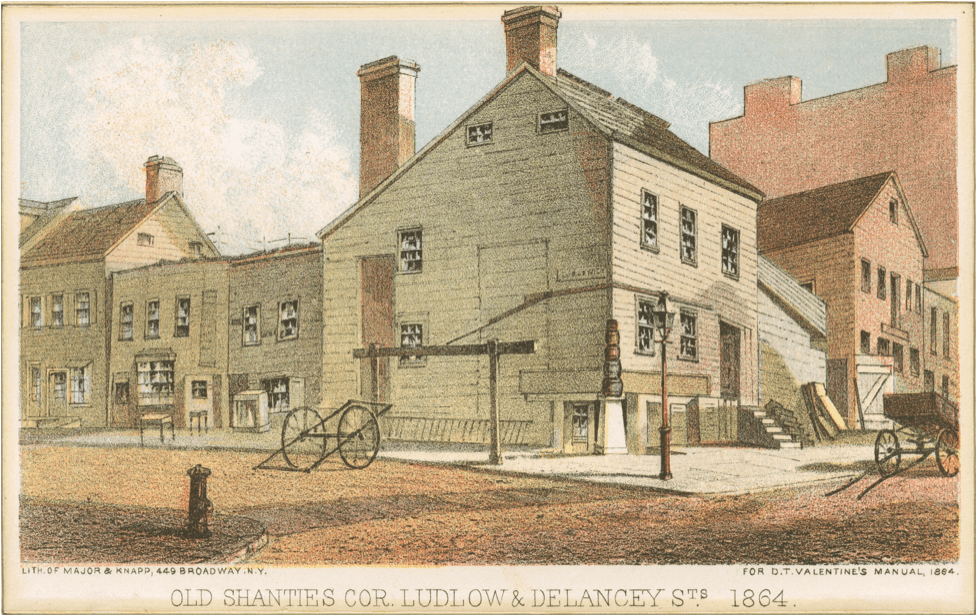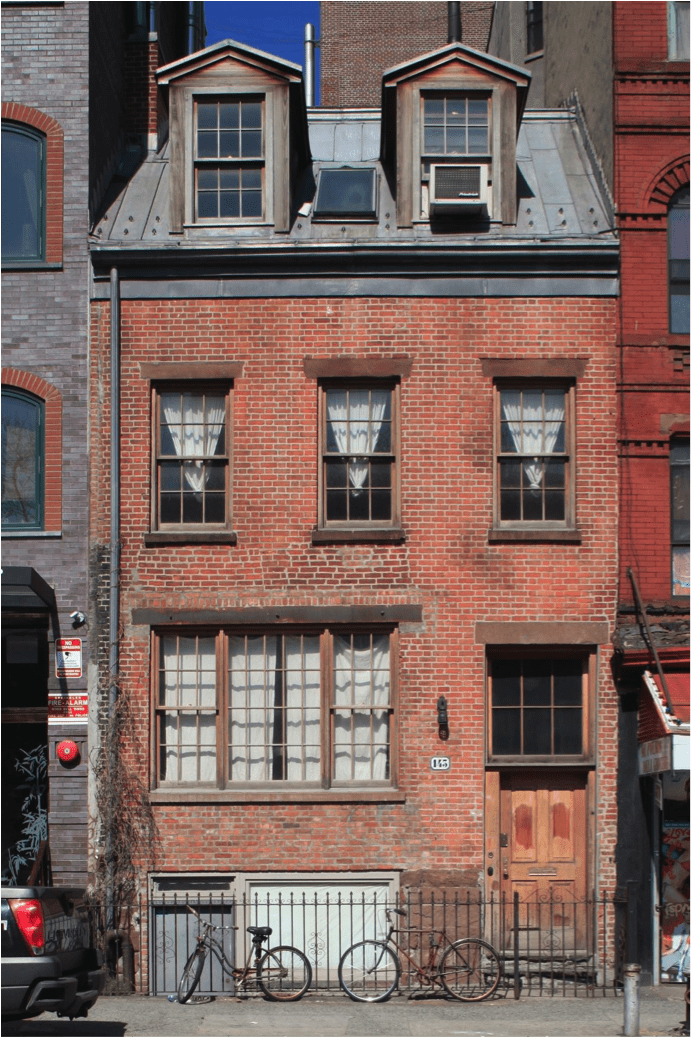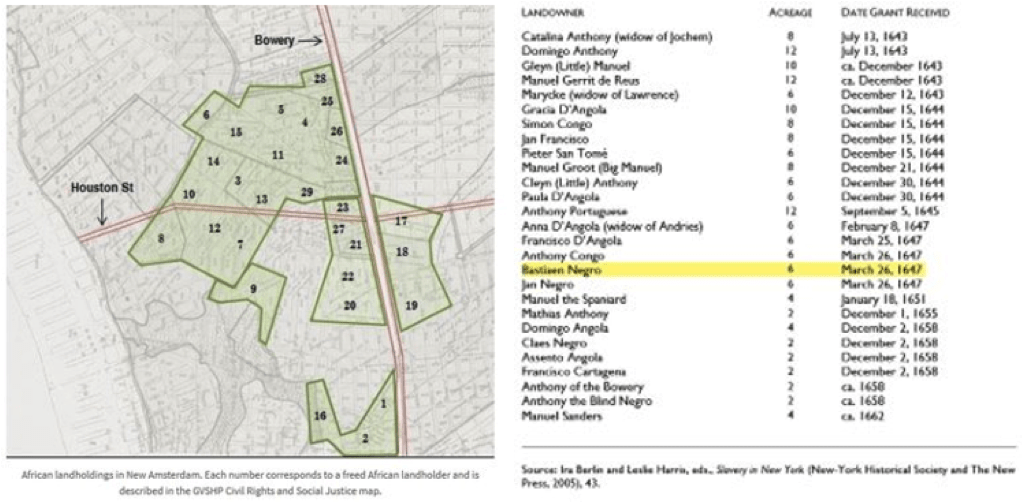Passing through various hands over the years, it would be eventually be acquired by the De Lancey family. One of the descendants fled to Great Britain during the American Revolution because of his loyalist sympathies. The land was then expropriated, parceled up and sold off, and eventually acquired by a merchant named George Sutton, who built 143 Allen and five other buildings on the lot. Once on the periphery, the Lower East Side was quickly being absorbed into the urban milieu, and was well poised to take advantage of the northward growth of the city. Sutton would eventually sell it in 1843, after which it was divided into multiple units. Sometime in the 1910s, it was further converted for commercial operations.
The very urban expansion of New York that led to the row house would also be the harbinger of their decline. Immigration from the German States increased in the 1840s. Homes that had been conceived for single families were converted to fit three, four, or even eight, often in some unscrupulous ways. 143 Allen listed 15 residents in 1910. Built on the same 25×100 foot lots used by the row houses, employing uniform apartment layouts and standing two to three stories higher, tenements would ultimately prove a better solution to meet this incoming demand. These too had their flaws however, but that is an exploration for another time.


